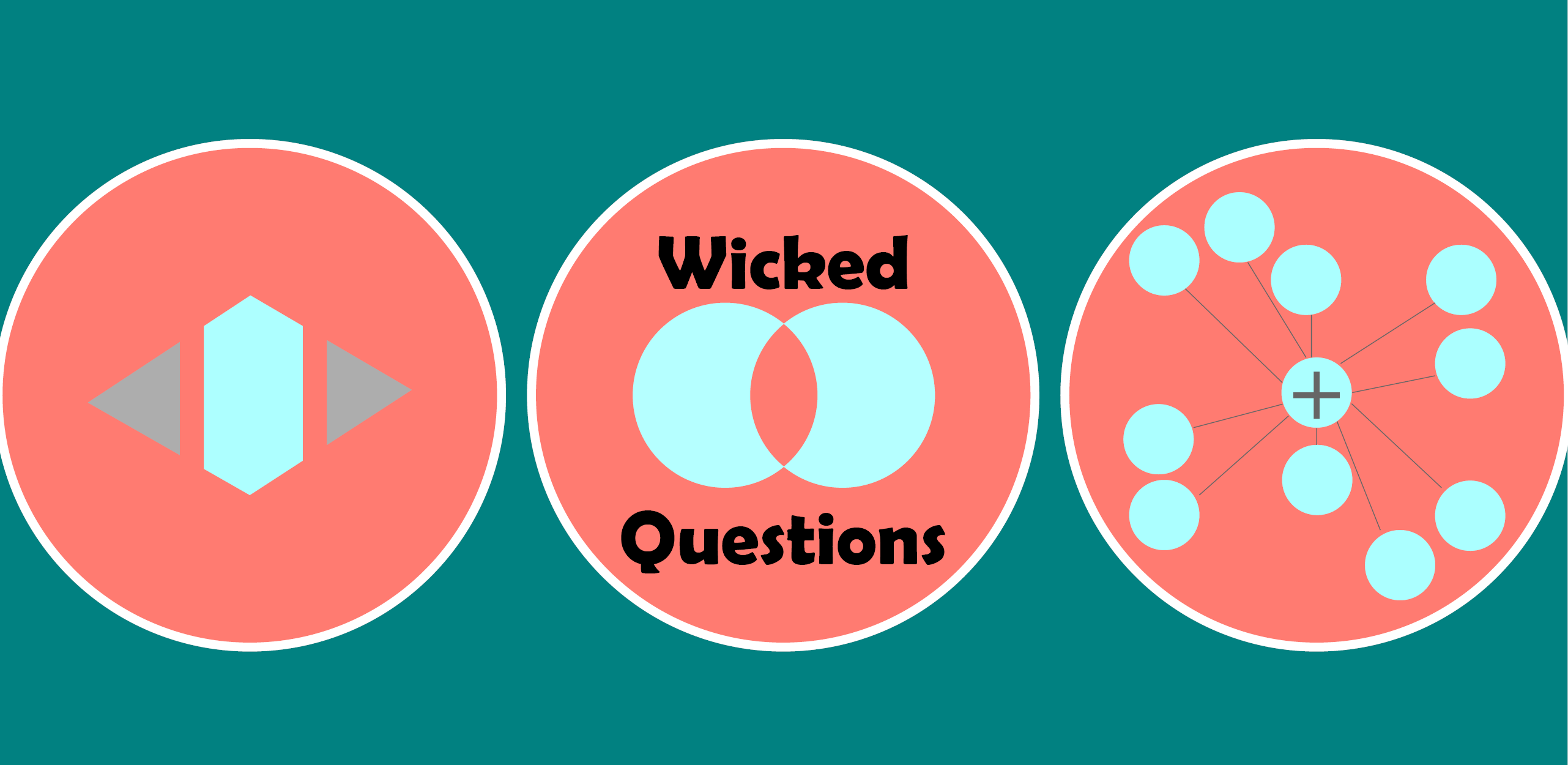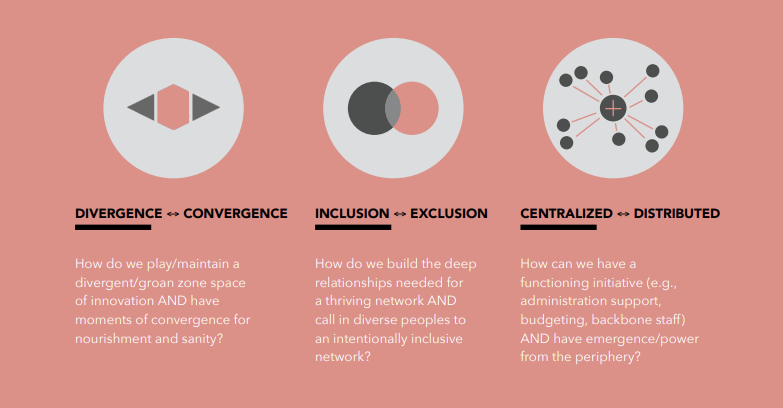Wicked Questions at the heart of networks

As the MaRS Solutions Lab notes: “creating guiding questions helps to map and understand your challenge.” In the world of complex systems change, anchor points are important amidst the chaos. Wicked questions related to your work can provide a short-hand for your team, as you bump up against the same paradoxes over and over again.
Defining Wicked Questions
Asking wicked questions is an exercise that helps to engage people to reveal entangled challenges and possibilities that are not intuitively obvious. They help us to identify inherent paradoxes and frame the challenge which supports subsequent efforts to map and understand the challenge.
A good wicked question:
- Helps us to name the central tensions and the paradoxes (the elephant in the room)
- Surfaces underlying, often contradictory assumptions
- Does not have obvious answers
- Opens up more questions, options, inquiries
- Is NOT a trick question, or rhetorical; not blaming or finger pointing.
Source: MaRS Solutions Lab
The following wicked questions surfaced frequently in one area of Inspiring Communities work: building a social innovation ecosystem for Atlantic Canada. Under the banners of both WeavEast and Wayside a changing team of dedicated folks have grappled with the problem of how to support changemakers through establishing a new network (since January 2019).
These wicked questions have been essential to understanding the tensions in achieving our work in this area and have an archetypal quality for other networks:

Divergence – Convergence
Some people enjoy the nebulous spaces of divergence; those who always ask the open questions and search for the blind spots. Others lean towards tangible tasks and goals. Playing in the innovation space needs both, and folks that can sit with discomfort on the end of the spectrum that isn’t their jam.
Inclusion – Exclusion
Networks are forged on trusting relationships, which require some kind of shared experience (so says one theory anyway). When resources go to supporting a shared experience (as they did to launch WeavEast), there are some who are included and others who aren’t. Is the work of building a network inherently caught in this paradox? Or just certain kinds of networks, I wonder?
Centralized – Distributed
Participatory can go too far. I feel like there should be a good term for this: hyper-participatory process? Yet the minute a decision is made without participation, network members can feel disenfranchised (the dangers of hypo-participatory process?). How do we keep people centered in a network, while not overburdening unpaid participation, yet move through the day-to-day functionings effectively? It’s tricky business!
Closing
As an evaluator, I see power in making visible the ‘elephant in the room’. The work of complex systems change is hard, and understanding the recurring paradoxes that you and your team bounce between, seemingly endlessly in some cases, is not only more effective, but it can be nourishing.
Call-to-Action
What are the wicked questions at the center of your work? This resource from Liberating Structures walks you through surfacing your wicked questions.
Share this:
No Comments
I love wicked questions. Thanks for this great post!